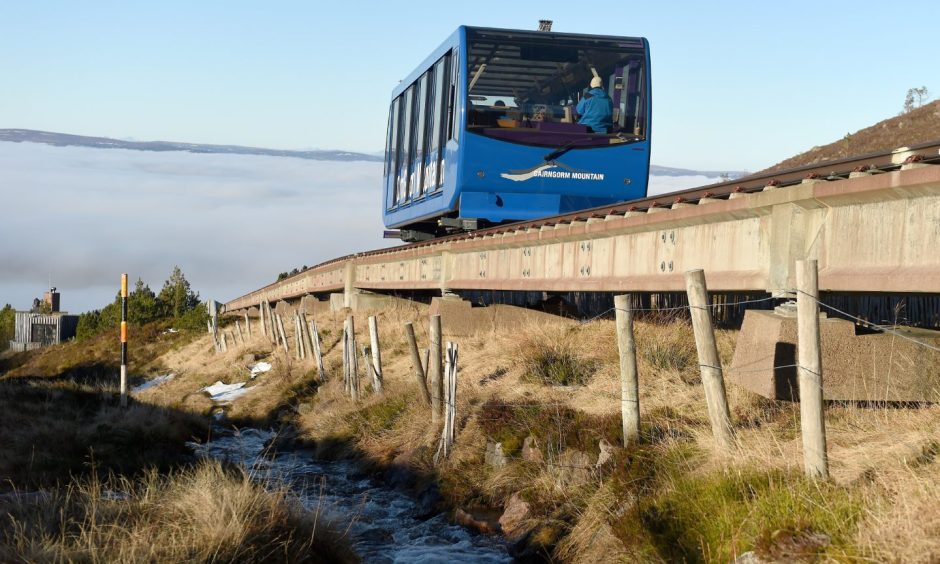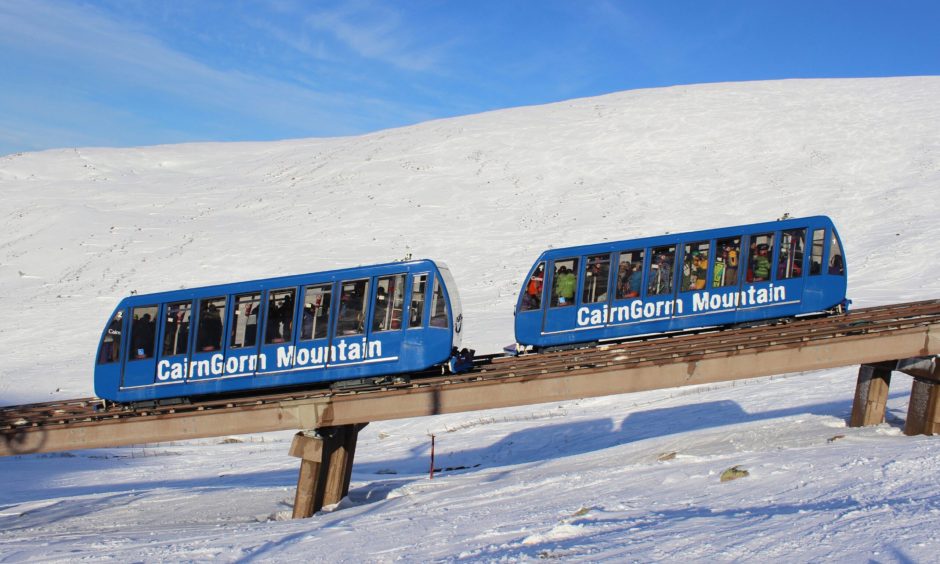The troubled Cairngorm mountain railway was supposed to be open for winter skiing but is still out of action while Swiss experts fly in for safety checks.
Millions have been spent repairing the funicular near Aviemore so far.
As the latest opening target fades into the distance, we asked government agency Highlands and Islands Enteprise (HIE) if it will ever open.
Here’s what they said.
Why is the funicular still closed?
HIE wanted the UK’s highest railway to open on December 20 – already a year later than repairs were meant to finish.
But that date was abandoned on Christmas Eve when further flaws on the structure were discovered.
Works resumed again on January 6.
What happens next?
Even when repairs are concluded, the funicular won’t be able to simply reopen.
Safety testing and trial runs will need to be carried out before passengers can go on the mountain railway again.
Swiss engineers from Garaventa – a specialist funicular company – are bring flown in for regular maintenance.
HIE says the engineering experts are responsible for safety checks every year and the taxpayer will incur no extra costs.
Meanwhile, beginner skiers and boarders are not able to take full advantage of good January snow on lower slopes because the tow bars aren’t always suitable to take them as far as the mid-station of the funicular.
Is there a set reopening date?
The Press and Journal asked if HIE can guarantee the funicular will be back in action before the end of the busy winter season.
The government agency was noncommittal.
A spokesperson said: “We aim to bring the funicular back into service as soon as possible.
“At present, our contractors are agreeing the scope of works that are required to ensure safe operations.”
Only then will a more complete timetable be offered.
What if the funicular is deemed unsafe?
Last November, an engineer who oversaw the building of the Skye Bridge, branded the funicular “inherently flawed” and said it should not reopen.
If safety trials are required before the mountain railway can take on passengers again, that leaves big questions: What happens if engineers say the structure is not fit for purpose, and are there any contingency plans for a worst-case scenario where this happens?
The simple answer from HIE is: No.
The government agency is operating on the assumption everything will turn out fine.
“We are confident that the remediation works that are currently drawing to a close will prove successful,” a spokesperson said.
Garaventa’s testing will centre on how the carriages on the funicular perform in service, not the actual repair works being carried out.
Does the funicular have a long-term future?
HIE remains optimistic about the funicular despite the fact it has only been in service for seven months since 2018.
Campaigners opposed to the mountain railway want to see it removed and feel vindicated by the escalating scandal.
A previous round of repairs – completed in January 2023 – cost the taxpayer £25 million.
Gordon Bulloch, a leading campaigner, said HIE was giving a “drip feed” of information to the public with the latest delays.
“Yet again, HIE is being economical with the truth,” he said.
“I am dismayed that the Scottish Government has not intervened by now.”




Conversation